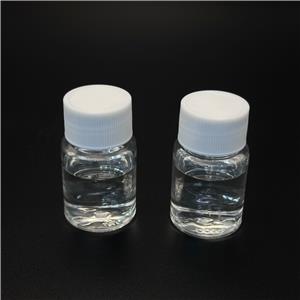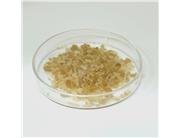1-(3,5-Dichloro-4-fluorophenyl)-2,2,2-trifluoro-ethanone is a chemical compound of interest due to its unique structure and potential applications in various fields of organic synthesis and materials science. This compound consists of a trifluoroethanone group attached to a phenyl ring that is substituted with chlorine and fluorine atoms, providing a highly reactive electrophilic center. The presence of multiple halogen atoms in the structure enhances the compound's reactivity and makes it a useful intermediate for the synthesis of more complex molecules. Its chemical properties and the presence of the trifluoroethanone group suggest that it can be utilized in reactions such as nucleophilic substitution, electrophilic aromatic substitution, and as a building block for the development of functionalized compounds.
The discovery of 1-(3,5-dichloro-4-fluorophenyl)-2,2,2-trifluoro-ethanone is part of ongoing research into the synthesis of halogenated compounds, which are of great importance in organic chemistry due to their reactivity and stability. The halogenated aromatic ring structure provides a versatile platform for designing molecules with tailored properties, such as enhanced solubility, stability, and reactivity. The trifluoroethanone moiety, in particular, is known for its ability to participate in nucleophilic substitution reactions, making it a valuable intermediate in the creation of other fluorinated compounds.
In terms of application, 1-(3,5-dichloro-4-fluorophenyl)-2,2,2-trifluoro-ethanone is often employed in the synthesis of fluorinated organic molecules, which have significant applications in the pharmaceutical, agrochemical, and materials industries. The fluorine atoms in the structure impart unique electronic and steric properties to the molecule, which can be harnessed to develop compounds with enhanced bioactivity and specificity. In the pharmaceutical industry, for example, fluorinated compounds are widely used due to their ability to increase the stability, bioavailability, and metabolic resistance of drugs. This particular compound may serve as an important intermediate in the design of new fluorine-containing pharmaceuticals with improved therapeutic profiles.
Additionally, the compound's potential as a building block for the synthesis of agrochemicals cannot be overlooked. Fluorine-containing agrochemicals have become increasingly important in pest control and agricultural applications because they tend to exhibit greater efficacy and environmental stability compared to non-fluorinated counterparts. The ability to incorporate trifluoroethanone and halogenated aromatic groups into agrochemical structures could lead to the development of more effective pesticides, herbicides, or fungicides with desirable characteristics such as low toxicity and high target selectivity.
The reactivity of 1-(3,5-dichloro-4-fluorophenyl)-2,2,2-trifluoro-ethanone also extends to materials science, where it could be used in the design of functionalized polymers or specialty materials. Fluorinated compounds are known for their excellent chemical resistance, thermal stability, and hydrophobicity, making them ideal candidates for high-performance materials. By incorporating the trifluoroethanone group into polymeric materials, it is possible to enhance their properties, making them suitable for use in demanding environments, such as coatings, electronic components, and other advanced applications.
In conclusion, 1-(3,5-dichloro-4-fluorophenyl)-2,2,2-trifluoro-ethanone is a valuable compound with a wide range of applications in organic synthesis, pharmaceuticals, agrochemicals, and materials science. Its unique combination of trifluoroethanone and halogenated aromatic components offers a powerful platform for the development of new and improved compounds with desirable properties. As research in these fields continues, it is likely that the applications of this compound will expand, contributing to advancements in various industries.
Brand: Soarwin
CAS No.: 1190865-44-1
EC Number:829-719-5
Molecular Formula: C8H2Cl2F4O
Melting point: 1.577±0.06 g/cm3 (20 ºC 760 Torr)
Boiling point: 124.7±27.3 ºC




 China
China

